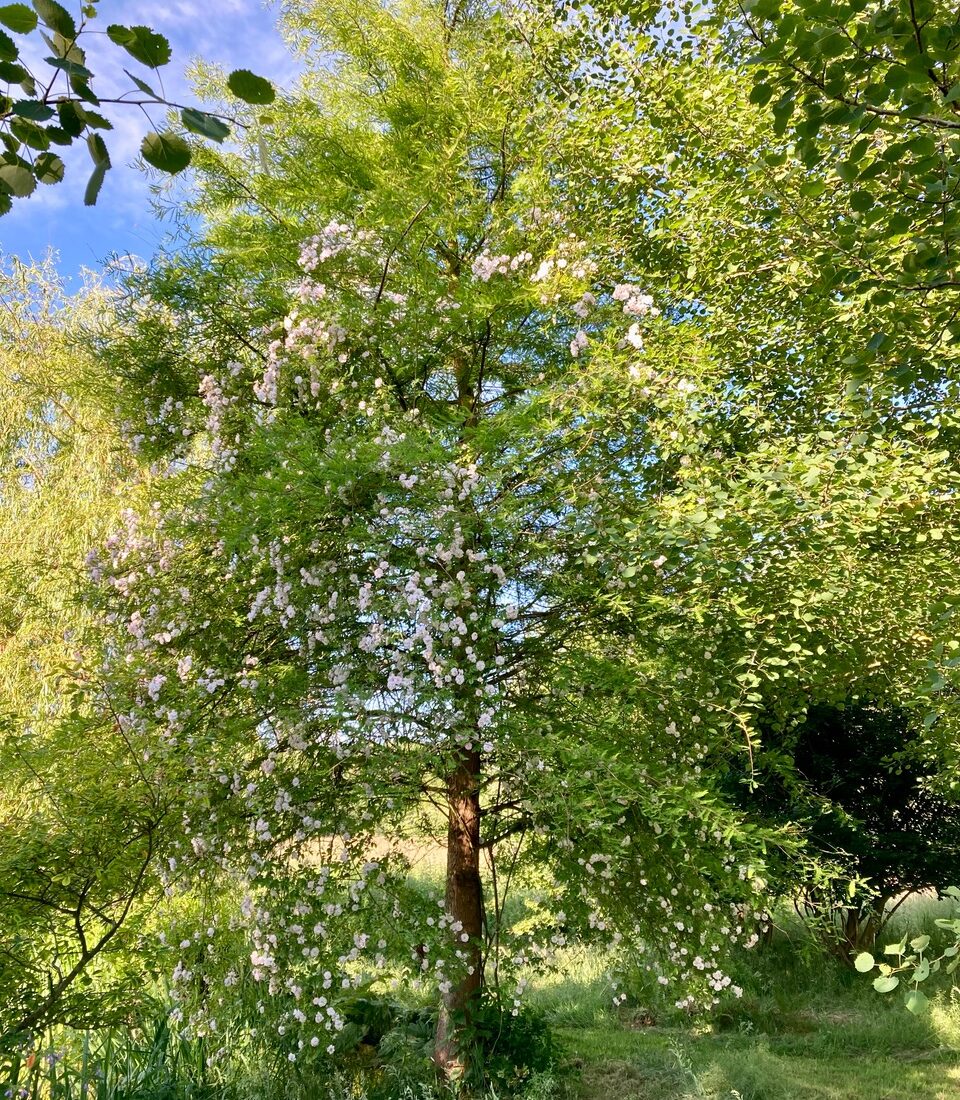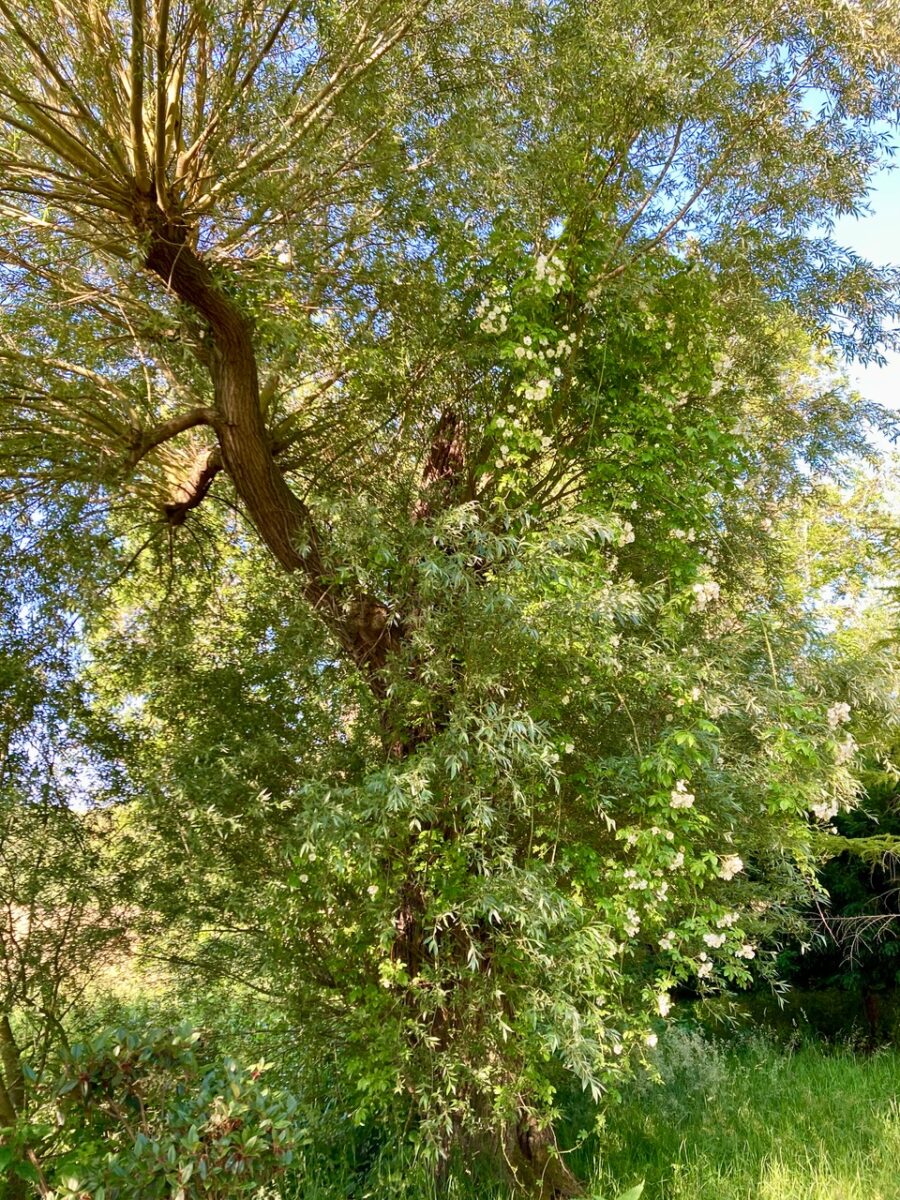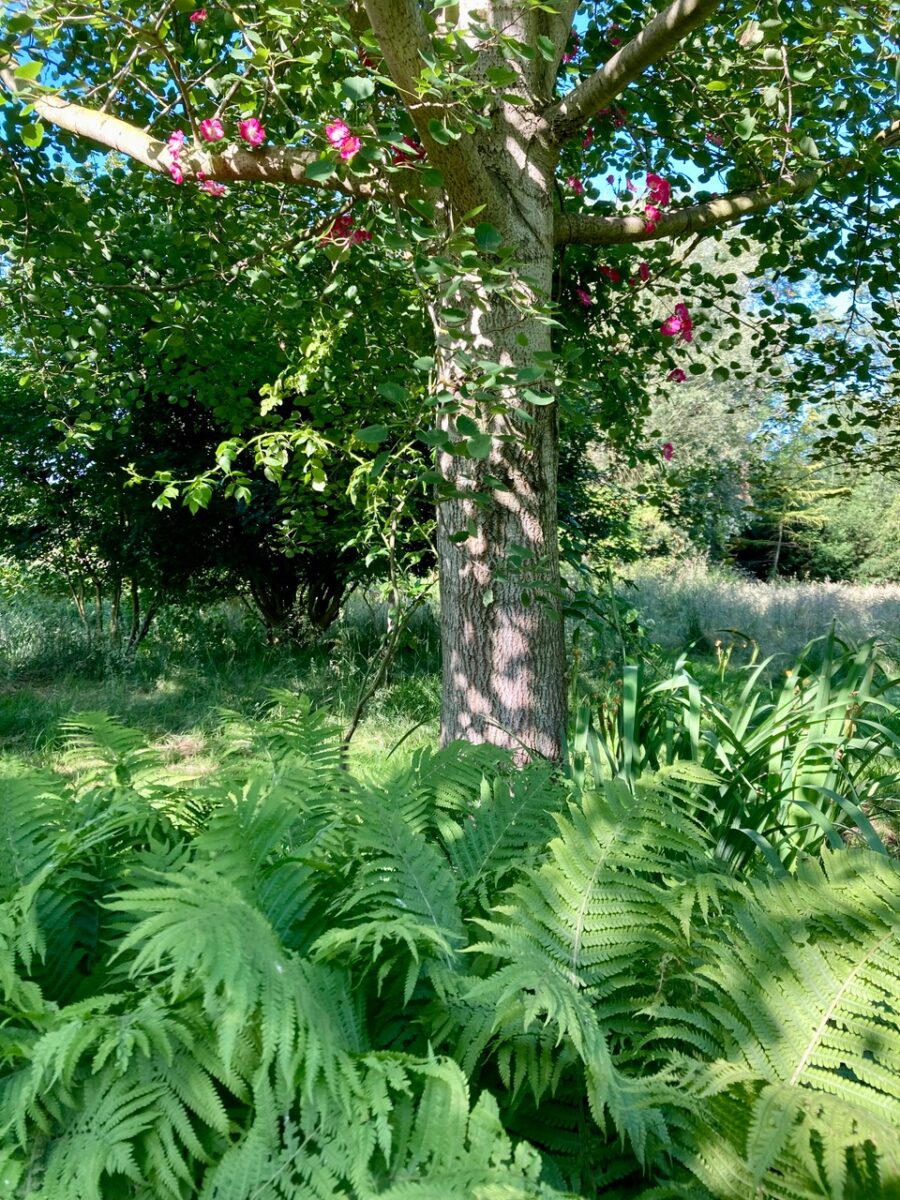Rambling Roses at Mansard House

Blog
Rambling Roses
Rambling or rambler roses (Rosa) are perfect for covering a large wall or pergola, or growing into the canopy of a large, established tree. Rambling roses are usually very vigorous and need strong support. They produce large clusters of usually small, and often fragrant flowers attractive to pollinators
Rambling roses have sturdy arching stems carrying generous sprays of flowers. These are usually sweetly scented and most appear in one big flowering flush in early summer. Flowers are often small and single, although a few produce larger, double flowers. Some produce abundant colourful hips (fruits) They prefer well-drained, fertile soil. Many tolerate a degree of shade, although they’ll flower more abundantly in sun. Most are robust enough to withstand a windy site. Rambling roses can struggle in waterlogged or poor, very dry soil. They will not flower well in deep shade.
The Rambling Roses at Mansard House
The garden at Mansard House, here in Suffolk is not so much of a designed garden, but rather a kind of garden laboratory to try out planting schemes before imposing them on our clients. The 2.5 acre gardens do provide a good testing facility. Not only is the soil tricky – pH7.8 and manganese deficient, but also plagued with deer, dry in the summer and underwater in the winter. So any plant that makes it through all of that, should do well in a tamer environment.
In true William Robinson style, I have planted 17 rambling roses to do what they do best: climb trees. This, in my opinion, is the best way to grow them. Once up in the canopy, you can just leave them indefinitely, reaping the reward of magnificent displays in late spring and early summer. It’s also a good way of embellishing a tree that perhaps is not the most magnificent of specimens. I have a lot of crack willows (Salix fragalis) whom are prone to living up to their name in shedding limbs on a regular basis. A vigorous rambler such as Rosa Kiftsgate, will soon transform the tree into a thing of beauty.
But not every tree is rambler friendly. Without irrigation it is very hard to coax a rambling rose up a dense canopied weeping willow. Also, allelopathy (certain trees secrete biochemicals into the soil to prevent competition) comes in to play, for example, oak. In these cases you can plant the rose outside of the drip line of the tree and allow it to enter the canopy higher up. We used that method at the Royal Botanic Gardens, Kew by building tall tripod as a kind of ladder and then removing it once the rambling rose was established.
The other thing I like to do is match the rambler to the tree. For example, Rosa Blush Rambler is quite a cold pink with quite glaucous foliage and so much better suited against a slivery tree, such as Populus tremula. Whereas, the creamy yellow, egg-yolk centred flowers of Rosa Bobbie James looks great in warm yellowy green foliaged trees such as Salix alba.
Anyway, 17 ramblers up 17 trees – it almost looks comical in the second week of June. But when producing a planting plan for a new design project, I can tailor a great match in colour, fragrance, height and health for a host tree.
Rambling Rose


